#AncientEgypt
Explore tagged Tumblr posts
Text

Ancient Egyptian funerary mask, inlaid wood, dating from around 1400-1300 BC, end of 18th dynasty. Louvre
#reddit#ancientegypt#egypttravelgate#ancient egypt#egyptian#funerary mask#inlaid wood#wood#1400-1300 bc#end of 18th dynasty#louvre
110 notes
·
View notes
Photo

The Last Dynasty: Ancient Egypt from Alexander the Great to Cleopatra
Toby Wilkinson's "The Last Dynasty" is a definitive text on Ptolemaic Egypt. It covers the rise and fall of the Ptolemaic kings and queens, spanning from Alexander the Great to Cleopatra VII. Equally importantly, the author takes time to explore how life in Egypt changed under Greek rule. It stands as one of the most comprehensive and well-written texts on the Ptolemaic dynasty.
On a large scale, the book covers the history of Egypt from Alexander's conquest until the death of Cleopatra VII. It chronicles the beginnings of Greek rule over Egypt and the ways that the Ptolemaic dynasty attempted to bend their new kingdom to their will. Under their domination, Egypt's culture, economy, and language were transformed into something neither wholly Greek nor wholly Egyptian.
The overall arc of the book covers Ptolemaic Egypt's initial prosperity and expansion, followed by civil war and decline. It ends with the Roman conquest of Egypt in 30 BCE, after nearly 300 years of Greek rule. Its 14 chapters are divided into four sections: Apotheosis, Crisis, Neurosis, and Nemesis. The intriguing interplay between kings, queens, generals, and politicians is drawn in very human terms.
The book is equally interesting when it zooms in on the smaller lives of ordinary people. Wilkinson pulls readers into the daily routines of Egypt under Greek rule. They are introduced to its cities, its industries, and its landscapes. The focus on ordinary life in Ptolemaic Egypt helps readers to understand the true cost of the dynasty’s political and military ambitions and to trace the roots of Egyptian resistance to Greek rule. The Ptolemies’ military might was financed with Egypt’s gold, agriculture, and industry, which meant that economic disruptions at home had the potential to break their international power.
Besides civil conflict, the other great threat to Ptolemaic survival was the rise of the Roman Republic. This famous alliance-turned-rivalry brought about the end of Ptolemaic Egypt as it succumbed to the erosion of its geopolitical power. The latter Ptolemies’ attempts to ally themselves with Rome are the focus of the last few chapters, most notably the ones about Cleopatra VII and her father Ptolemy XII.
Maps and full-color plates illustrate the book, maps at the beginning, and plates at the back. It has a larger selection of images than most similar titles. Supplementary material such as family trees, timelines, and lists of rulers helps readers to keep track of major figures and events. This broad, detailed portrait of Ptolemaic Egypt is drawn from a dizzying number of primary and secondary sources. This literature is referenced in the notes, source section, and bibliography at the back of the book. Students will likely find this book valuable as a primer to the period.
Several recent and forthcoming books aim to tackle the Ptolemaic period, with varying levels of success. However, Wilkinson's work will likely be one of the most widely used of these books, being simultaneously rigorous and enjoyable. The most similar existing title in terms of scope and depth would be Günther Hölbl’s A History of the Ptolemaic Empire (2000), which is considerably denser and less approachable. Another similar title is Michel Chauveau’s Egypt in the Age of Cleopatra (1997), which is somewhat dated and not quite as broad.
Toby Wilkinson is an Egyptologist who received his PhD from Cambridge University in 1993. He has written several books on ancient Egypt, including The Rise and Fall of Ancient Egypt (2010). Wilkinson is currently a Fellow of Clare College, the Society of Antiquaries, and the Royal Historical Society.
Continue reading...
39 notes
·
View notes
Text

#tolkien#loroftherings#thelordoftherings#dimitaralekseevdimitrov#mysteries#history#ancientmysteries#ancientegypt#thecelts#ancientrome#ancientgreece#asatru#vegan#wicca#celtic gods#lord of the rings#norse gods#dimitardimitrov#silmarillion
29 notes
·
View notes
Text
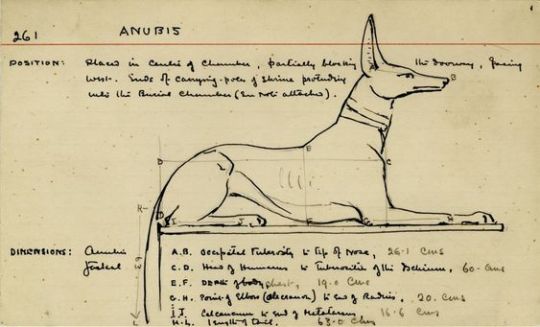
Inside Howard Carter's Tutankhamun Diary
The famed archaeologist took detailed notes of what he found inside King Tut's tomb.
225 notes
·
View notes
Text

Vatikan, Biblioteca Apostolica Vaticana, Pal. lat. 1885 Alchemistische Illustrationen — Süddeutschland, um 1570-1580
#esoteric#consciousness#metaphysical#occult#masonic#rosicrucian#ancientegypt#rosecross#alchemy#magic#alchemist#art#magick#magical#spiritual
385 notes
·
View notes
Text

Statue of Prince Rahotep, Old Kingdom, Egypt, c. 2600 BCE.
Prince Rahotep was the son of the renowned Pharaoh Sneferu, under whose reign the first true flat-sided monumental pyramids were constructed. This statue is part of a pair, depicting Rahotep alongside his wife, Nofret. Notably, Rahotep is shown with a significantly darker skin tone compared to Nofret. This contrast likely reflects traditional gender roles: the man's darker complexion symbolizes outdoor labor and exposure to the sun, while the woman's lighter skin signifies her status and privilege to remain indoors. The style of the statue is characteristic of the Old Kingdom—static and idealized. Rahotep’s brother was possibly Khufu, the builder of the Great Pyramid of Giza, the tallest pyramid in the world.
#egyptology#archeology#archeologist#ancientegypt#ancientart#oldkingdom#egypt#ancientsculpture#sculpture#antiquité#antichità#egyptianhistory#history#art#giza#pyramid
13 notes
·
View notes
Text
Ancient Egyptians Used Honey as Medicine 🍯
Did You Know?
The ancient Egyptians didn’t just use honey as food — they used it as medicine too!
Thanks to its natural antibacterial properties, honey was applied to wounds, used to treat infections, and even helped with stomach problems.
Over 4,000 years ago, honey was considered liquid gold in Egyptian healing practices!

Want more weird and fun facts?Follow Get Knowing for daily doses of knowledge!
3 notes
·
View notes
Text

High quality #handmade replica #skulls and #mummified heads by #sculptor Owen Johnston (Vicious Noodles), international shipping from UK. Etsy shop link in bio, I send to most of Europe, #USA, Australia, New Zealand and Hong Kong.
#skull#crâne#goth#horror#halloween#DarkAcademia#DarkAesthetic#AncientEgypt#HalloweenDecor#spooky#ActuallyHandmade#HumanSkull#ReplicaSkull#HumanSkullReplica#anatomy#StillLife#StillLifePhotography#stilllifephotographyideas#gothic
7 notes
·
View notes
Text

"Kohl" We where each assigned a color with a small except explaining the history of the color. We where only aloud to use the color assigned in the artwork. I was assigned Kohl, which was used in ancient Egypt as a sort of eyeliner, worn for its protective qualities both against the sun and against illnesses that affect the eyes. The rich would mix crushed pearls or emeralds or such things to add a shiner to their kohl. It was later discovered that the chemicals kohl is made of helps prevent eye infection. My ancient Egyptian grammar may be off but the hieroglyphs spell out "ointment that protects the eyes" in ancient Egyptian. The hieroglyph on the top right is the symbol of Sheshat goddess of scribes and illustrators.
Nov 8 2019
#kohl#blackandwhite#art#watercolor#ink#hieroglyphics#ancientegypt#ancientegyptianart#egyptkohl#sheshat#painting#historyofcolor#egypt#ointment#protects#eye#eyeliner#wings#theghostofdash
4 notes
·
View notes
Text
Egypt 5 design










#Horuseye#Horus#eye#eyeofHorus#Egypt#Egyptian#ancient#ancientEgypt#pattern#symbols#Pharaoh#old#oldEgypt#cultur#monuments#lotus#graphicdesign#redbubble#gifts#tshirts#homedecor#Egyptianart#Egyptianculture#shopping#fashion#art#design#illustration
6 notes
·
View notes
Text
PHARAOH RAMSES II

In the land where the Nile's waters whisper secrets to the sands and pyramids reach for the heavens, there ruled a pharaoh whose name echoed through the annals of time like a thunderous clap - Ramses the Great, mighty sovereign of Egypt.
Born beneath the auspices of the gods, Ramses emerged as the chosen heir, destined to etch his legacy upon the tablets of history. From the moment his tiny hands grasped the royal scepter, the course of Egypt's fate was forever altered.
Like the falcon soaring high above the temples, Ramses' reign knew no bounds. With the wisdom of Thoth and the strength of Horus coursing through his veins, he embarked on a journey to immortalize his kingdom in the annals of eternity.
Across the golden sands and beneath the burning sun, Ramses led his armies into the crucible of battle, his chariot carving pathways through the tumult of war. From the banks of the Euphrates to the heart of Nubia, his name became synonymous with victory, and his enemies trembled at the mere mention of his approach.
Yet, amidst the clash of armies and the triumph of conquest, Ramses' true greatness lay not in the might of his sword, but in the depths of his heart. For he was a pharaoh of unparalleled benevolence, a guardian of his people's hopes and dreams.
Under his benevolent gaze, the temples rose in splendor, the fields flourished with abundance, and the arts flourished like the lotus in bloom. From the grandeur of Abu Simbel to the majesty of Luxor, Ramses adorned the land with monuments to stand the test of time.
But even as the sands of eternity slipped through his fingers, Ramses knew that his legacy would endure, a testament to the indomitable spirit of Egypt and the immortal flame that burned within his soul.
And so, as the sun set upon his reign and the stars whispered secrets to the night, Ramses the Great ascended to join the ranks of the gods, his name enshrined in the pantheon of legend, a beacon of light to guide the hearts of future generations.
Thus ends the saga of Ramses the Great, whose legacy shall endure as long as the Nile flows and the sands of Egypt stand sentinel against the march of time.
Watch Full Video
#ai history#ai#ancientegypt#egypt#ramses II#pharaoh#sinbad#education#video#tiktok#instagram#instagood#love#like#photography#follow#instadaily#photooftheday#instalike#fashion#likeforlikes#picoftheday#trending#beautiful#viral#followforfollowback#insta#india#art#photo
2 notes
·
View notes
Photo

Ancient Egyptian Goddesses
Egyptian goddesses are among the best-known and most popular from antiquity. Images of Isis, Hathor, Bastet, and Selket – among many others – are world-famous. The popularity of these female deities reflects the high status of women in ancient Egypt, who were regarded as almost equals to males and held prominent positions.
Continue reading...
200 notes
·
View notes
Text
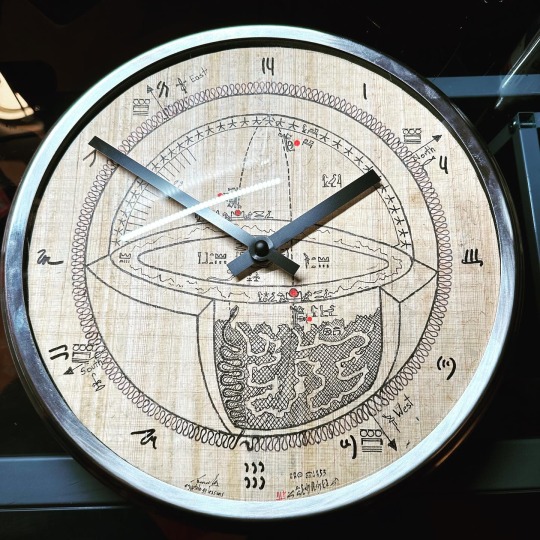

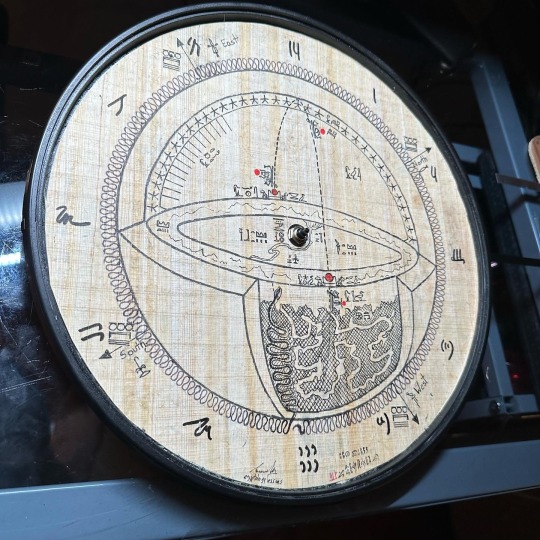



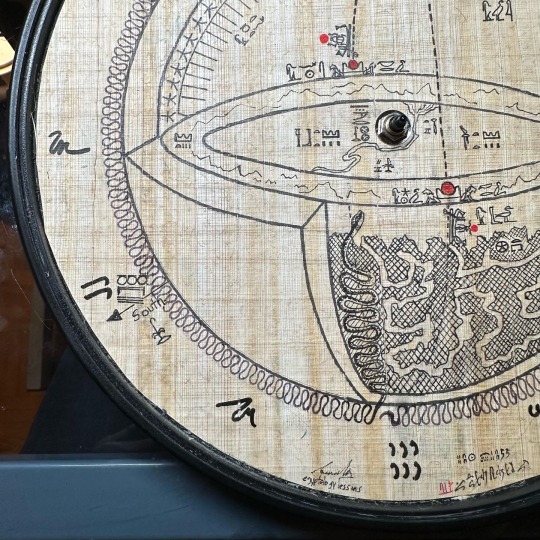

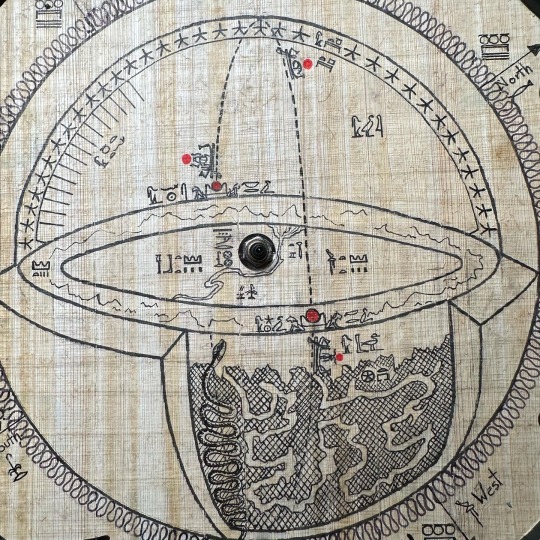

A modern recreation of the Ancient Egyptian cosmological world. The video provides details and explanation of the art, which is greated on natural papyrus paper.
Dimensions: Diameter 12”, Depth of Clock 2”
The original concept art derived from Egyptologist @Tito Vivas (Gracias/Thank you)
Photo of Tito shared by Egyptologist @elianubis (Gracias/Thank you)
𓋹𓎬𓋹𓎬𓋹𓎬𓋹𓎬𓋹𓎬𓋹𓎬𓋹𓎬𓋹𓎬𓋹𓎬𓋹𓎬𓋹𓎬𓋹𓎬𓋹𓎬𓋹𓎬𓋹𓎬𓋹
🎥 @egyptologylessons 𓋹𓊽𓋴𓆖𓎛𓇳𓎛 ©️ 𓊁𓊁𓊁𓊁𓊁𓊁𓊁𓊁𓊁𓊁𓊁𓊁𓊁𓊁𓊁𓊁𓊁
#Ancientegypt #ägypten #egyptology #egypte #egitto #egipto #이집트 #egypt #egyptologylessons #cosmology #mythology #hieroglyphs #hieratic #clock #egypte
#ancientegypt#egyptology#egypte#hieroglyphics#egyptologist#hieroglyphs#clock#cosmology#Ancient Egyptian#Ancient Egypt
30 notes
·
View notes
Text
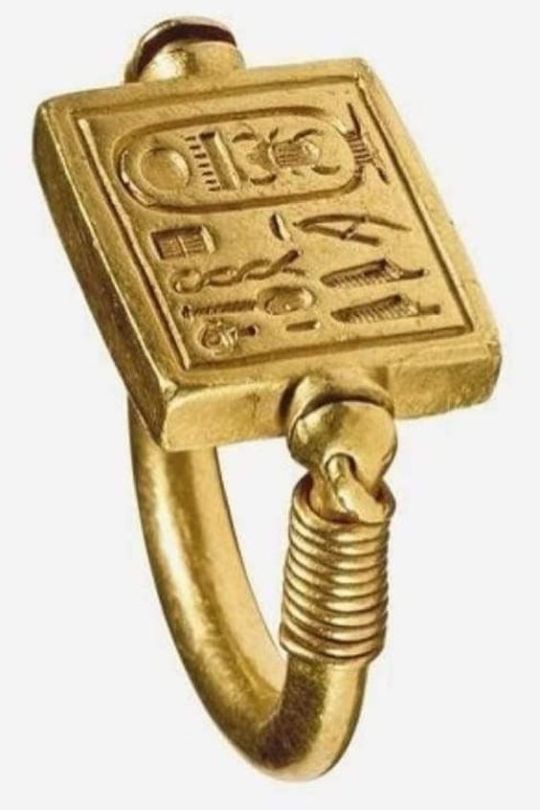
Gold Ancient Egyptian Ring
79 notes
·
View notes
Text

Herrn Georgii von Welling opus mago-cabbalisticum et theosophicum, c. 1735
#esoteric#consciousness#metaphysical#occult#rosicrucian#ancientegypt#rosecross#alchemy#magic#alchemist#art#magick#magical#spiritual
205 notes
·
View notes
Text
Never underestimate the power of the depictions of divinity. Here is Goddess Maat along with Goddess Isis with the disc with a U shaped symbol. I have always loved seeing Goddess Maat she is the one with the wings. People who feel other faiths and depiction of divinity other than their own are wrong are brainwashed, ignorant and harmful to others and the world. If their was only suppose to be one religion then why are their many?



2 notes
·
View notes